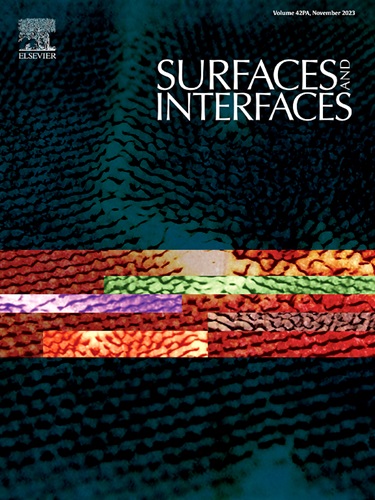Self-nucleation growth of bimetallic niobium tungsten oxide electrodes with delaminated nanostructure for excellent dual-band electrochromic performance
IF 5.7
2区 材料科学
Q2 CHEMISTRY, PHYSICAL
引用次数: 0
Abstract
Dual-band electrochromic (EC) smart windows, dynamically and independently controlling the transmittance of near-infrared (NIR) and visible (VIS) light, can significantly reduce the energy consumption of buildings. Here, we provide a self-nucleation solvothermal strategy to prepare nanostructured bimetallic niobium tungsten oxide (Nb18W16O93, NWO) on FTO substrates featuring a delaminated manner with a bush-like morphology composed of nanoneedles as the upper layer and a dense structure comprising nanoparticles as the down layer. Such structure combines good adhesion to the substrate and great electrochemical activity, leading to excellent dual-band electrochromic properties, including large optical modulation (72.6 % at 633 nm and 86.6 % at 1600 nm), high color rendering efficiencies (41.9 cm2/C at 633 nm and 53.2 cm2/C at 1600 nm), and long cyclic stability (retaining 85.4 % at 633 nm and nearly 100 % at 1600 nm after 1500 cycles). The as-prepared NWO electrode achieves three types of electrochromic effects: bright, cold, and dark electrochromic modes corresponding to the different threshold potentials of W and Nb elements during the electrochromic process. These results demonstrate that the nanostructured Nb18W16O93 has promising performance as smart window electrodes in energy-saving buildings and propose a one-step template-free way to synthesize films with complex nanostructures.

求助全文
约1分钟内获得全文
求助全文
来源期刊

Surfaces and Interfaces
Chemistry-General Chemistry
CiteScore
8.50
自引率
6.50%
发文量
753
审稿时长
35 days
期刊介绍:
The aim of the journal is to provide a respectful outlet for ''sound science'' papers in all research areas on surfaces and interfaces. We define sound science papers as papers that describe new and well-executed research, but that do not necessarily provide brand new insights or are merely a description of research results.
Surfaces and Interfaces publishes research papers in all fields of surface science which may not always find the right home on first submission to our Elsevier sister journals (Applied Surface, Surface and Coatings Technology, Thin Solid Films)
 求助内容:
求助内容: 应助结果提醒方式:
应助结果提醒方式:


